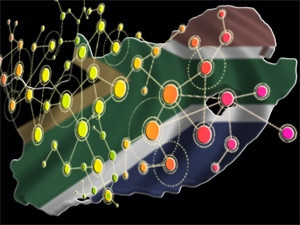
While the industry has largely welcomed the Independent Communications Authority of SA's (ICASA's) final broadband roadmap, there are significant hurdles that stand in the way of seeing it realised - notably, SA's digital migration delays.
ICASA published the final International Mobile Telephony (IMT) roadmap on Friday - a step towards realising SA Connect's (SA's broadband policy) aim of universal broadband, as well as towards a vibrant and competitive telecoms industry and the promotion of investment in SA.
According to the International Telecommunication Union (ITU), IMT systems are mobile systems that provide access to a wide range of telecoms services, including advanced mobile services, supported by mobile and fixed networks, which are increasingly packet-based.
IMT objectives
The primary objective of IMT specifications is to provide a basis for harmonisation worldwide and reduce ecosystem fragmentation. ICASA notes SA stands to benefit from adhering to a globally harmonised framework in terms of economies of scale, interoperability (easy roaming), and predictability and stability for the mobile telecoms industry.
A key driver for the deployment of IMT bands in SA, is the need to ensure mobile broadband plays its role in meeting the objectives of "broadband for all", as per SA Connect, which was introduced under the leadership of former communications minister Yunus Carrim last year.
A key part of this policy concerns the deployment of the 700MHz and 800MHz digital dividend bands (and potentially the 450-470MHz band) for the provision of universal broadband services.
In its final IMT roadmap, the regulator outlines what it calls a "draft indicative timeline" for the deployment of IMT bands and the associated migration timelines, saying there are some "essential conditions" for the draft time plan - including that broadcasters complete the digital terrestrial television (DTT) and analogue switch off process by the ITU's mid-2015 deadline.
Thorn in the side
ICT expert Adrian Schofield says, while the IMT roadmap is a must-have in terms of providing a proper framework for the allocation of spectrum for the appropriate services - hopefully in sync with international norms - much of this plan may be dependent on the transition to DTT.
"We have to free up that (digital dividend) spectrum as urgently as possible, because on the international front it has to be done by June next year and if our neighbours have done so and we haven't, South African viewers will experience interference. But until the right frequency has been allocated for the right purposes, access cannot be extended to everyone."
Until the industry has clear statements from the two departments grappling with control over the DTT process, says Schofield, he cannot see it moving forward.
Independent telecoms researcher Samantha Perry says the IMT roadmap, while on the face of it a good step forward, is another indication of how the delays to DTT is prejudicing SA's ability to free up spectrum. "[And] that is what we need now, as lower frequency bands are going to be critical.
"As far as I am aware, the broadcasters are ready to roll out DTT, but until the issue over set-top box (STB) controls can be sorted, their hands are tied."
Another significant DTT deterrent, notes Perry, is that the long-dysfunctional SA Post Office has been earmarked to be the body that ensures STBs get to the roughly five million houses that are being subsidised. "It would not be fair to deprive people of the few mass communication mediums they have access to. I can't see government doing that."
ICASA released the draft IMT roadmap at the end of August, with industry players given until 7 October to submit their thoughts. Among those that supported the authority's IMT initiative - and tendered their points of view - were Telkom, Neotel, Vodacom, MTN and Wireless Business Solutions.
The SA Connect broadband policy targets:
Target | Penetration measure | Baseline (2013) | By 2016 | By 2020 | By 2030 |
Broadband access in Mbps user experience | % of population | 33.7% internet access | 50% at 5Mbps | 90% at 5Mbps 50% at 100Mbps | 100% at 10Mbps 80% at 100Mbps |
Schools | % of schools | 25% connected | 50% at 10Mbps | 100% at 10Mbps 80% at 100Mbps | 100% at 1Gbps |
Health facilities | % of health facilities | 13% connected | 50% at 10Mbps | 100% at 10Mbps 80% at 100Mbps | 100% at 1Gbps |
Government facilities | % of government offices | -- | 50% at 5Mbps | 100% at 10Mbps | 100% at 100Mbps |
Share